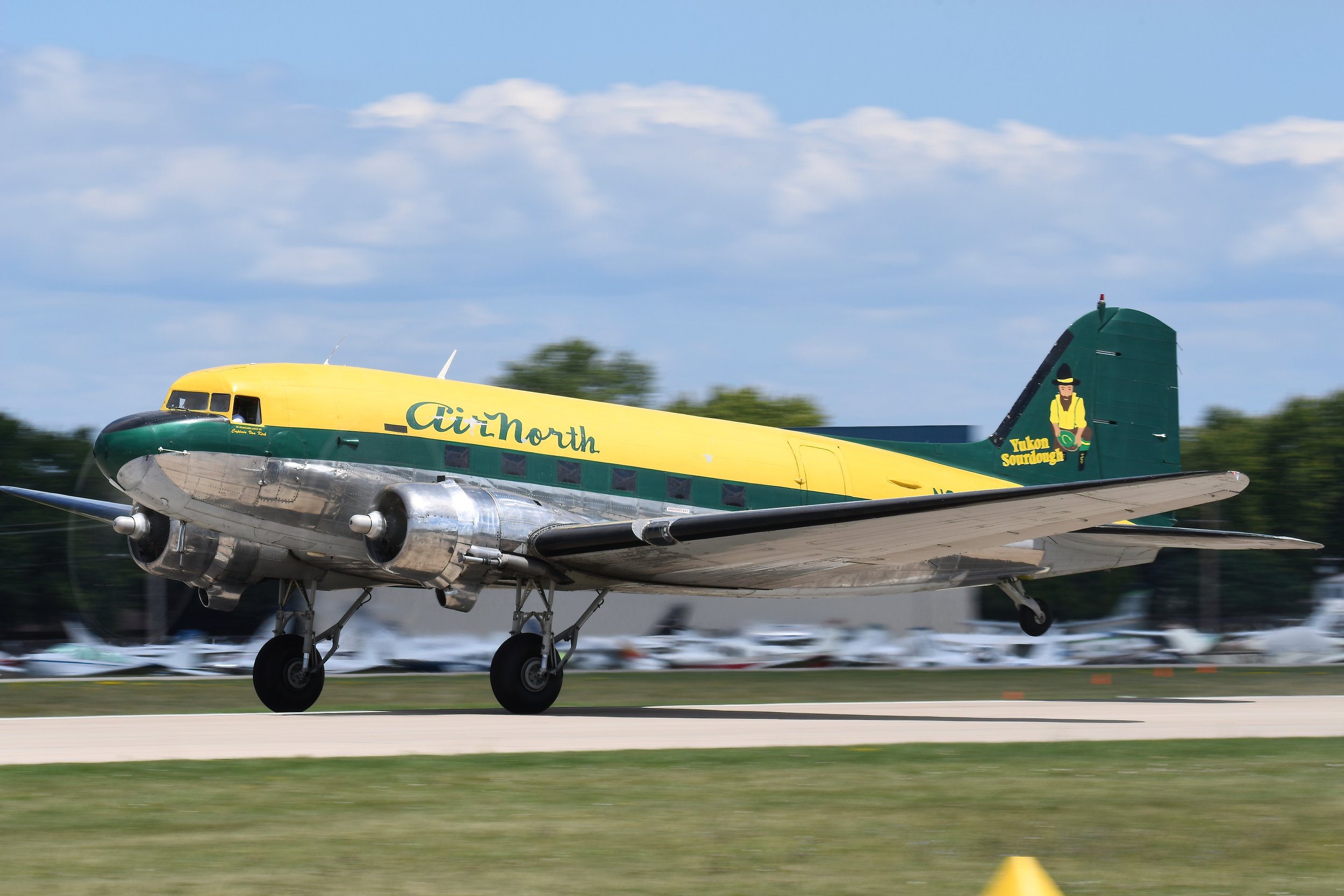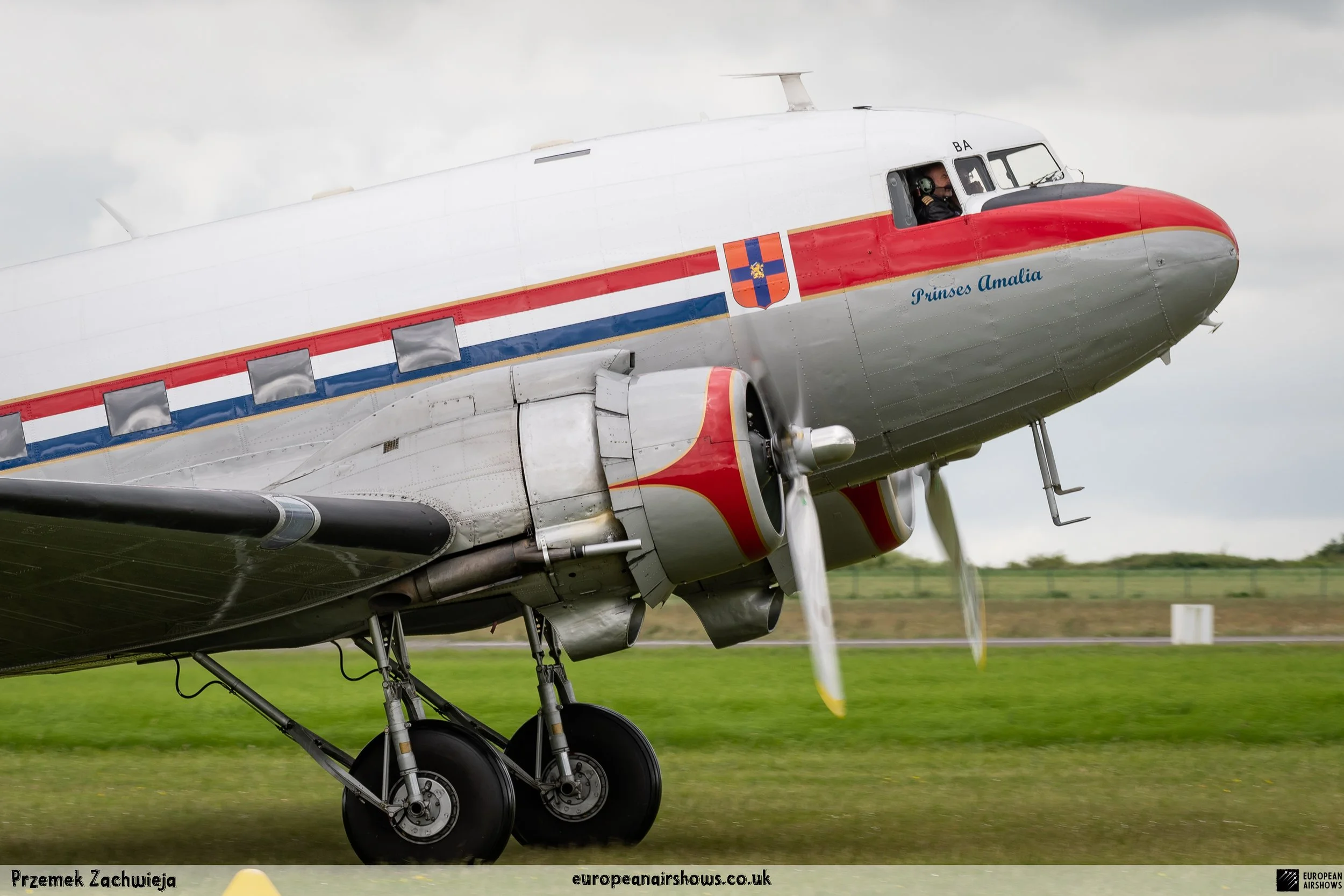
December 17 / Douglas DC-3 first flight
First Flight 17 December 1935
Douglas DC-3
The Douglas DC-3 is an iconic aircraft that redefined air travel and had a profound impact on both the commercial airline industry and military aviation during the mid-20th century. Its development was a response to the competitive pressures faced by Transcontinental and Western Airlines (TWA) in the early 1930s. At the time, United Airlines had secured an exclusive deal with Boeing for their innovative Model 247, leaving other airlines, including TWA, seeking alternative solutions to remain competitive. This led TWA to approach the Douglas Aircraft Company, headed by Donald Douglas, with a request to design a new aircraft that could rival the Boeing 247.
The result was the Douglas DC-1, which first flew in 1933 as a prototype. It was a promising aircraft that paved the way for the DC-2, introduced in 1934. The DC-2 was a commercial success, but there was still room for improvement, particularly in passenger comfort and capacity. The evolution of the DC-2 into the DC-3 was largely driven by American Airlines CEO C.R. Smith, who envisioned a sleeper version of the aircraft that could replace the airline’s aging fleet of Curtiss Condor II biplanes. Smith’s persuasive discussions with Douglas led to the creation of the Douglas Sleeper Transport (DST), a prototype that first took to the skies on December 17, 1935, marking the 32nd anniversary of the Wright Brothers’ historic flight.
The DST featured a wider cabin than its predecessors, measuring 92 inches across, which allowed for the installation of sleeper berths. This aircraft could be configured to carry 14 to 16 sleeping passengers or 21 seated passengers, a flexibility that appealed to airlines. The first production model of the DC-3, which followed the DST, offered 21 seats and became the standard for passenger travel. The aircraft’s design was overseen by Douglas’ chief engineer, Arthur E. Raymond, and a team of skilled engineers who worked tirelessly to refine its features.
The DC-3 quickly gained popularity for its speed, range, and reliability, setting new standards in air travel. It could cross the continental United States from New York to Los Angeles in just 18 hours with only three stops, a remarkable feat at the time. This capability made it one of the first airliners that could operate profitably by carrying passengers alone, without relying on mail subsidies. By 1939, the DC-3 dominated the skies, accounting for around 90 percent of all airline flights globally.
The onset of World War II saw the DC-3 adapted for military use, with several variants produced under different names. The C-47 Skytrain, known as the Dakota in British service, became a workhorse for the Allies, serving in various roles including troop transport, cargo delivery, and medical evacuation. The Soviet Union and Japan also produced their own versions under license, significantly increasing the total number of DC-3s built during the war years.
Despite the emergence of more advanced aircraft designs during and after the war, the DC-3’s versatility ensured its continued use on less demanding routes. Its production for civilian use ended in 1943, with a total of 607 aircraft built. However, military production continued until the end of the war, bringing the total number of DC-3s and its variants to over 16,000. The aircraft proved so adaptable that many continued to fly well into the 21st century, with estimates suggesting that around 150 were still operational as of 2023.
The DC-3’s adaptability extended to various modifications and conversions over the years. In the 1950s, some DC-3s were fitted with turboprop engines, such as the Rolls-Royce Dart and the Pratt & Whitney PT6A, enhancing their performance and extending their operational life. Companies like Basler Turbo Conversions and Braddick Specialised Air Services International undertook extensive refurbishments, upgrading the aircraft with modern avionics and more powerful engines.
Numerous variants of the DC-3 were produced to suit different needs, including the Douglas Sleeper Transport (DST), the DC-3A with Pratt & Whitney engines, and the Super DC-3, which featured a lengthened fuselage and redesigned wings. Military versions included the C-41, C-48, and C-49, each tailored for specific roles within the armed forces.
Today, the Douglas DC-3 is celebrated as a pioneering aircraft that transformed air travel and played a crucial role in both commercial aviation and military operations. Its enduring legacy is a testament to its innovative design, reliability, and versatility, qualities that have kept it flying for nearly nine decades.
DC-3 Facts
Revolutionary Design: The DC-3 was a game-changer in the aviation industry, featuring an all-metal, low-wing monoplane design with retractable landing gear, which significantly improved its aerodynamic efficiency and performance.
Versatile Engine Options: Initially equipped with the Wright R-1820 Cyclone engines, later models and military versions predominantly used the Pratt & Whitney R-1830 Twin Wasp engines, enhancing its reliability and performance.
Pioneering Air Travel: The DC-3 was one of the first aircraft capable of making a profit solely from passenger service, without the need for mail subsidies, due to its efficiency and capacity.
Dominance in the Skies: By 1939, the DC-3 and its variants accounted for approximately 90% of all airline flights worldwide, highlighting its widespread adoption and popularity.
Military Workhorse: During World War II, the DC-3 was adapted for military use as the C-47 Skytrain (Dakota in British service), serving in various roles including troop transport, cargo delivery, and medical evacuation.
Global Production: Over 16,000 units were produced, including civilian, military, and foreign-built versions, making it one of the most produced aircraft in history.
Long Operational Life: Despite being designed in the 1930s, many DC-3s remained in service for decades. As of 2023, around 150 were still estimated to be flying, a testament to their durability and adaptability.
Turboprop Conversions: In the post-war era, several DC-3s were converted to use turboprop engines, such as the Rolls-Royce Dart and Pratt & Whitney PT6A, which extended their operational lifespan and improved performance.
Cultural Icon: The DC-3 is often celebrated as a symbol of the golden age of aviation and has been featured in numerous films, documentaries, and aviation museums around the world.
Adaptability and Legacy: The DC-3’s design proved highly adaptable, leading to numerous variants and modifications over the years, including the Super DC-3 with a lengthened fuselage and redesigned wings, ensuring its continued relevance in aviation history.


































